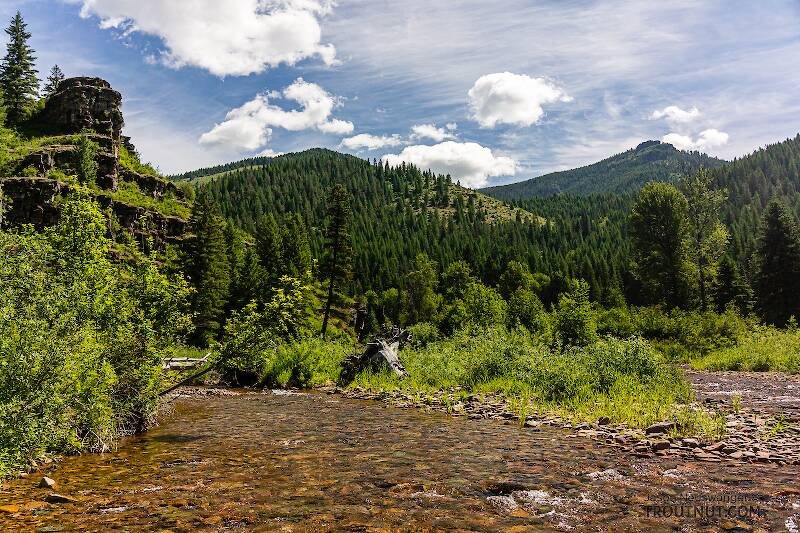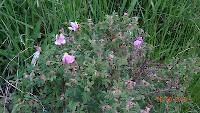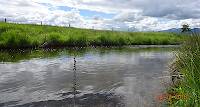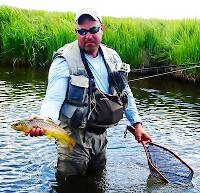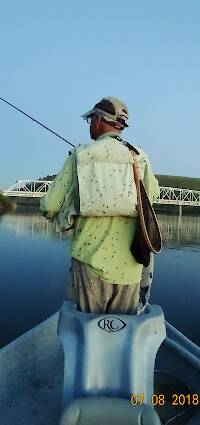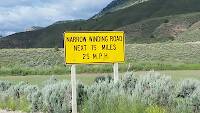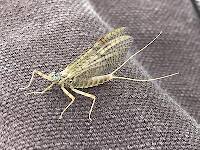
Salmonflies
Pteronarcys californica
The giant Salmonflies of the Western mountains are legendary for their proclivity to elicit consistent dry-fly action and ferocious strikes.
Featured on the forum

Some characteristics from the microscope images for the tentative species id: The postero-lateral projections are found only on segment 9, not segment 8. Based on the key in Jacobus et al. (2014), it appears to key to Neoleptophlebia adoptiva or Neoleptophlebia heteronea, same as this specimen with pretty different abdominal markings. However, distinguishing between those calls for comparing the lengths of the second and third segment of the labial palp, and this one (like the other one) only seems to have two segments. So I'm stuck on them both. It's likely that the fact that they're immature nymphs stymies identification in some important way.

Troutnut is a project started in 2003 by salmonid ecologist Jason "Troutnut" Neuswanger to help anglers and
fly tyers unabashedly embrace the entomological side of the sport. Learn more about Troutnut or
support the project for an enhanced experience here.
Greenghost on Feb 20, 2009February 20th, 2009, 4:51 pm EST
I'm hoping somebody can tell me what I'm dealing with here and possibly a proven imitation?Sorry,no pics,but I'll it describe best I can.
I beleive this caddis is some type of green sedge,but I can't find a pic of an adult to verify this,nor have I found a pattern that IMHO represents it very accurately?The entire bug is a beautiful bright,light green..more like lime or chartreuse,including the wings.Early June,midday,Southwestern New Brunswick,Canada.I've searched through hundreds of green caddis patterns on every flytying forum I can think of,and not a single green caddis imitation I've found has matching green wings like these naturals?Is this a standard practice to ignore the wing color?I'm sure natural colored elk/deer hair works as well,but it seems to me "matching the hatch" more accurately would only make sense?I'm not too bad at tying trout streamers and salmon flies sz 10 and larger,but I'm still a very amateur tier,esp. when it comes to sz 14 and smaller.I did manage to tie a reasonable imitation(basic elkhair caddis) with green dyed deer hair,and even lifted a few nice brookies with them.(patting self on back,LOL)
My questions are:
1)Is this a caddis unique to my area which might explain why I can't find any published imitation or do all/most green sedges also have green wings?
2)Or...is it common to ignore the wing color and tie it with natural colored elk?
3)Should I simply order a bunch of green elkhair caddis flies from a reputable tier or spend the rest of winter practicing tying the small stuff?
I beleive this caddis is some type of green sedge,but I can't find a pic of an adult to verify this,nor have I found a pattern that IMHO represents it very accurately?The entire bug is a beautiful bright,light green..more like lime or chartreuse,including the wings.Early June,midday,Southwestern New Brunswick,Canada.I've searched through hundreds of green caddis patterns on every flytying forum I can think of,and not a single green caddis imitation I've found has matching green wings like these naturals?Is this a standard practice to ignore the wing color?I'm sure natural colored elk/deer hair works as well,but it seems to me "matching the hatch" more accurately would only make sense?I'm not too bad at tying trout streamers and salmon flies sz 10 and larger,but I'm still a very amateur tier,esp. when it comes to sz 14 and smaller.I did manage to tie a reasonable imitation(basic elkhair caddis) with green dyed deer hair,and even lifted a few nice brookies with them.(patting self on back,LOL)
My questions are:
1)Is this a caddis unique to my area which might explain why I can't find any published imitation or do all/most green sedges also have green wings?
2)Or...is it common to ignore the wing color and tie it with natural colored elk?
3)Should I simply order a bunch of green elkhair caddis flies from a reputable tier or spend the rest of winter practicing tying the small stuff?
Taxon on Feb 21, 2009February 21st, 2009, 4:38 am EST
Greenghost-
You don't actually say what size it it, but if it's #16-#18, my guess would be Brachycentrus appalachia.
You don't actually say what size it it, but if it's #16-#18, my guess would be Brachycentrus appalachia.
Greenghost on Feb 21, 2009February 21st, 2009, 5:02 pm EST
I'd call it sz 14-16?Maybe 18?
Greenghost on Feb 22, 2009February 22nd, 2009, 6:28 am EST
Thanks Taxon,looked up Brachycentrus appalachia pics,sorry no,that's not it at all.The bug I'm describing is totally green,abdomen,wings,thorax,head....all of it.Legs too iirc?Kawasaki/Arctic Cat lime green.
Taxon on Feb 22, 2009February 22nd, 2009, 11:05 am EST
Greenghost-
Sorry, but that was my best guess.
Sorry, but that was my best guess.
GONZO on Apr 18, 2009April 18th, 2009, 7:17 am EDT
Greenghost,
Your description doesn't seem to match any caddisfly that I know (especially the green wing part), but it does sound exactly like the little chloroperlid stoneflies of Alloperla. These are commonly called Little Green Stoneflies or Lime Sallies and are often seen fluttering around riffled areas at midday in June. Compare to these images:
http://bugguide.net/node/view/117264/bgimage
http://bugguide.net/node/view/193103/bgimage
Your description doesn't seem to match any caddisfly that I know (especially the green wing part), but it does sound exactly like the little chloroperlid stoneflies of Alloperla. These are commonly called Little Green Stoneflies or Lime Sallies and are often seen fluttering around riffled areas at midday in June. Compare to these images:
http://bugguide.net/node/view/117264/bgimage
http://bugguide.net/node/view/193103/bgimage
Quick Reply
Related Discussions
Topic
Replies
Last Reply
0
May 6, 2011
by Jtberez
by Jtberez

